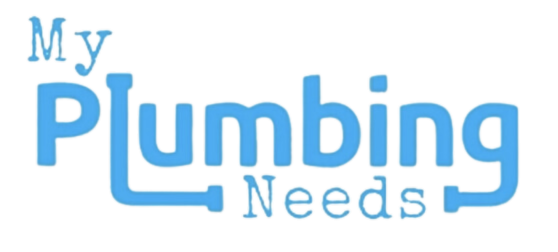Preparing your plumbing system for winter is essential in the UK, where cold weather can cause pipes to freeze, burst, and lead to costly water damage. Winterising your plumbing not only protects your home but also ensures your system remains functional throughout the colder months. Here is a comprehensive guide to help you effectively winterise your plumbing system and keep your home safe and warm.
- Insulate Exposed Pipes
Cold temperatures are one of the biggest threats to plumbing. Start by wrapping any exposed pipes in foam insulation sleeves or pipe insulation tape, particularly in unheated areas such as basements, lofts, and garages. Insulating these pipes helps prevent freezing by providing an extra layer of warmth and protection. You can find pipe insulation at most hardware shops, and it’s easy to install yourself or with the help of a professional.
- Seal Gaps and Cracks
Inspect your home thoroughly, paying special attention to areas where pipes enter walls or floors. Small gaps and cracks around pipes can allow cold air to seep in, making it more likely for pipes to freeze. Use caulking or spray foam to seal these openings. This not only keeps the cold air out but also improves your home’s energy efficiency by reducing drafts.
- Disconnect and Drain Outdoor Hoses
Leaving garden hoses connected to outdoor taps during winter can lead to trapped water freezing and expanding, which could damage the taps and pipes. Disconnect all outdoor hoses and drain any remaining water. Store the hoses indoors in a shed or garage, where they’ll be safe from the cold. This simple step can help prevent a major problem later.
- Shut Off Outdoor Taps
Locate the stopcocks for your outdoor taps and turn them off. Once the water supply is off, open the taps to drain any remaining water and leave them slightly open. This step ensures that any residual water can escape rather than freezing and causing damage. If your taps don’t have an internal shutoff valve, consider upgrading them to frost-proof models.
- Drain and Insulate Sprinkler Systems
If you have an outdoor sprinkler system, it’s essential to drain it thoroughly and insulate any exposed pipes. Follow the manufacturer’s instructions or consult a professional for specific winterisation steps, as improperly drained sprinklers can freeze and crack, leading to costly repairs.
- Use Heat Tape for Extra Protection
For pipes particularly susceptible to freezing, consider using heat tape. This electrical heating tape can be wrapped around pipes and provides gentle warmth to help prevent freezing. Be sure to follow the manufacturer’s instructions and safety guidelines carefully when using heat tape, as improper use can pose a fire risk.
- Keep the Heating On
During particularly cold weather, keep your home’s thermostat set to at least 12°C (55°F), even if you’re away. Maintaining a minimum temperature helps ensure that the pipes stay warm enough to prevent freezing. It’s a small investment that can save you a lot of trouble and money in the long run.
- Open Cabinet Doors
Allow warm air to circulate around pipes located under sinks in your kitchen and bathroom by opening the cabinet doors. This helps keep pipes warmer, particularly if they’re on an outside wall where they may be more vulnerable to the cold.
- Let Taps Drip
In extreme cold, let a small trickle of water flow from taps connected to exposed pipes. Moving water is less likely to freeze, and this simple measure can relieve pressure in the system, helping to prevent pipes from bursting if they do freeze.
- Know Where Your Main Water Stopcock Is
In the unfortunate event of a burst pipe, it’s crucial to know the location of your main water stopcock and understand how to use it. Being able to shut off the water quickly can prevent significant water damage to your home, potentially saving you from expensive repairs. Check the stopcock to ensure it turns easily, as old valves can sometimes get stuck.
Conclusion
Winterising your plumbing system is a proactive and essential measure to safeguard your home against the effects of cold weather. By following these tips, you can reduce the risk of frozen pipes and maintain a reliable plumbing system throughout winter. If you’re unsure about any step or need additional help, consider consulting a professional plumber to ensure your system is fully protected for the season. Taking these precautions now can help you avoid costly and inconvenient plumbing issues, giving you peace of mind during the colder months.
Explore more articles on our blog:
- Crafting the ideal bathroom: A guide to perfect layouts
- 10 Essential Plumbing Products Every Homeowner Should Have
- Spring Plumbing Tips
- Top 5 Plumbing Tips Every Homeowner Should Know
- Essential Plumbing Tips for Homeowners: Keep Your Pipes Flowing Smoothly
- Plumbing Essentials: A Comprehensive Guide to Choose the Right Products for Your Home
- 5 Common Plumbing Myths Every Homeowner Should Know
- Essential Plumbing Tools Every Homeowner Should Have
- How to Unclog a Drain Naturally - Tips and Tricks
- The Ultimate Guide to Choosing the Right Water Heater
- Top 10 Plumbing Tips for First-Time Homeowners
- Understanding Different Types of Pipe Materials and Their Uses
- How to Install a New Tap
- Common Plumbing Mistakes to Avoid
- The Benefits of Regular Plumbing Maintenance
- Energy-Efficient Heating Solutions for Your Home
- Smart Home Plumbing: Innovations in the Industry
- How to Choose the Perfect Showerhead for Your Bathroom
- How to Fix a Leaky Tap: A Comprehensive Step-by-Step Guide
- How to Create a Spa-Like Bathroom on a Budget
- How to Install a Bathtub: A Comprehensive DIY Guide
- Autumn Plumbing Maintenance Tips: Preparing for the Colder Months
- Top 5 Plumbing Upgrades to Increase Your Home’s Value
- Understanding Boiler Types and Which One is Right for Your Home
- Understanding Underfloor Heating: Pros, Cons, and Installation Guide
- How to Detect and Fix a Hidden Leak

